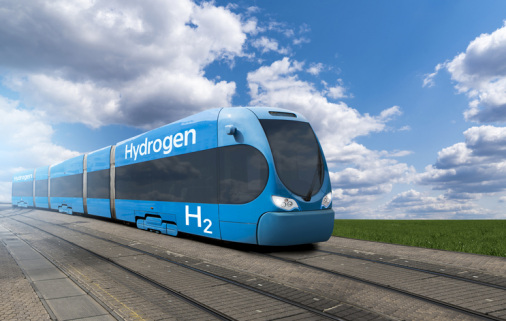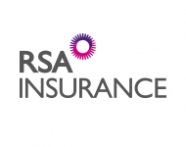Hydrail: on track for a greener future

Authored by RSA
Like all industries, the rail sector is looking for ways to reduce its carbon emissions and secure a greener future. Hydrogen-powered trains and infrastructure, hydrail represents one option that several rail operators are currently exploring. Steve Medhurst, global rail specialism director for RSA Insurance and head of our UK and International rail business, discusses the opportunity for insurance to play a role in the development of this next generation of railways.
As the transport sector, and the country as a whole, pushes towards carbon emission reduction targets, railway operators are looking at ways to make trains and their associated infrastructure less reliant on fossil fuels.
Although rail is often thought of as a ‘green’ mode of transport - taking cars off the road, transporting goods across land rather than by air, and so on - most trains across the globe currently run on diesel.
The sector is exploring various options including dual-mode trains, that might be a hybrid of electric and diesel, for example, and entirely battery-operated trains. For longer journeys, however, the most viable option would appear to be hydrogen-powered engines and infrastructure.
This concept, known as hydrail, is being piloted and explored by rail operators in the UK and around the world.
German rail operator Deutsche Bahn, for example, is developing a system that will comprise a refuelling station, hydrogen-powered train, and maintenance infrastructure, with the eventual aim of replacing diesel units on many of its regional services.
So-called green hydrogen - which is hydrogen obtained without creating any polluting emissions - will be produced by electrolysis, whereby renewable sources are used to break down water. The hydrogen expressed from that process is then compressed and stored in a mobile storage tank before being processed and cooled in a track-adjacent tank trailer, ready for engines to refuel.
It’s impressive stuff and an example that UK operators are looking at as they explore their own decarbonisation strategies. And as well as an opportunity for the rail industry to reduce its carbon footprint, we see this as an exciting opportunity for the insurance sector too.
Understanding the technology and the risk
As with any opportunity and any technology development, there are risks to be considered here - some with which risk professionals and insurers are well-acquainted, others which might be new.
From a health and safety point of view, rail operators that introduce hydrail will need to sit down and rewrite the rule book. Hydrogen as a fuel has moved on leaps and bounds from the hydrogen airships of the start of the last century which were so marred by disaster. Nonetheless, there are safety issues that will need to be addressed.
How will hydrogen be stored, for example? Will it be kept away from engines in the depot? Given the built-up nature of the UK and the proximity of many train depots to town centres, this is something we will need to look at particularly closely .
Another consideration is the health and safety of the personnel who will be required to refuel trains. Should they wear goggles, for example, will they need different skills to those they have acquired for refuelling diesel-powered engines, and so on.
We believe that this represents a great opportunity for insurers to work alongside the development of this technology, to understand the risks and work with the rail industry to assess, manage, mitigate and ultimately transfer them.
Making hydrail insurable
As an industry, insurance must not shy away from hydrail. It seems extremely likely that hydrogen will play a major part in powering railways in the near future. If we work alongside our rail industry customers and the wider rail industry as they develop and introduce the technology, we can not only gain confidence ourselves in how this technology works, we can help our clients to create and use innovations that will be insurable.
The better we understand the risks, the better we can help our clients and brokers to understand and manage those risks - it’s a virtuous circle.
We also want to work alongside bodies like the Office for Rail and Road, a subdivision of the Department for Transport, and the Rail Safety and Standards Board, a not-for-profit organisation run by industry stakeholders, as they too seek to understand more about the risks and rewards of a move to hydrail.
This is an exciting opportunity for insurers like us. Just as the rail industry needs to adapt, so we too must adapt - to meet our clients’ needs and also to help to fulfil our own Environmental, Social and Governance (ESG) goals and aspirations.
As the rail industry continues to explore new ways to reduce its carbon emissions we will be alongside it - in the cabin - learning about this new technology and finding the ways in which insurance can enable it to enter into service.
About RSA
With a 300-year heritage, RSA is one of the world’s leading multinational insurance groups.
Today, RSA employ around 23,000 people, serving 17 million customers in around 140 countries. While RSA's origins lie in London, RSA is a global company with businesses in both mature and emerging markets. RSA have major operations in the UK, Ireland, Scandinavia, Central and Eastern Europe, Canada, Asia, the Middle East and Latin America. youTalk-insurance sharing insurance news and video.

